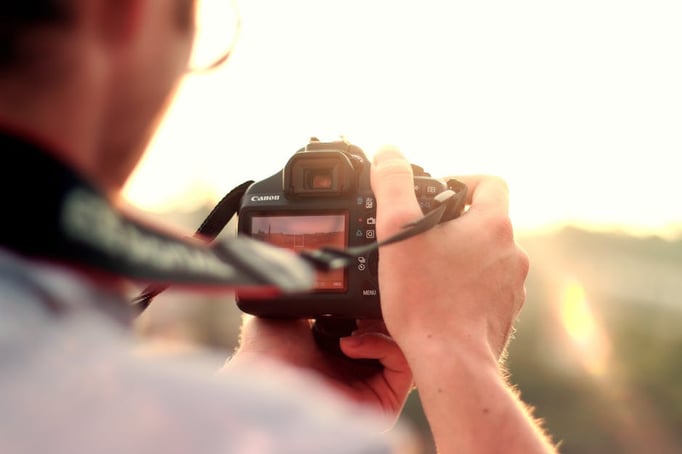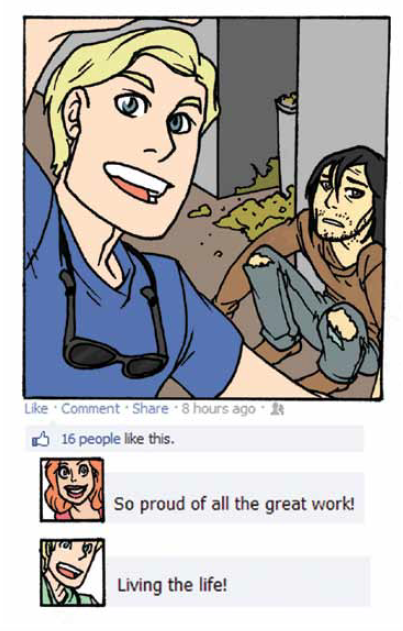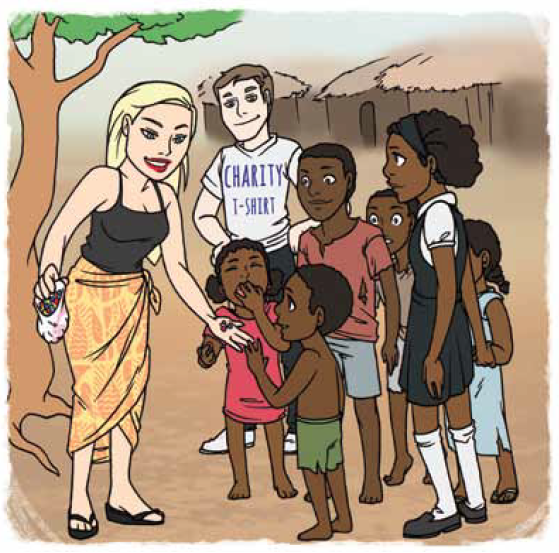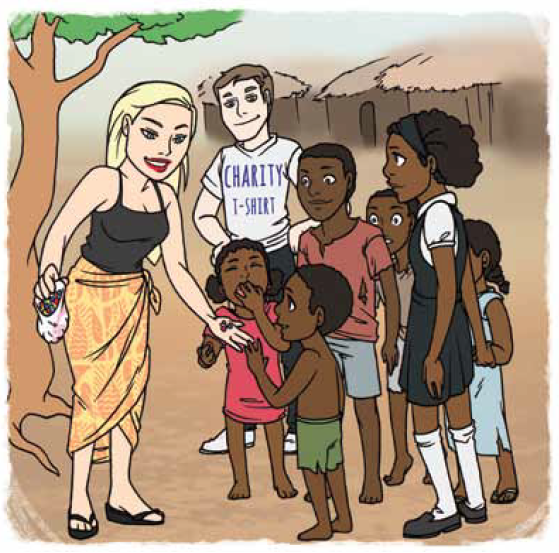In a society dominated by online social feeds, we are constantly exposed to images of travel, whether they're from our friends, online celebrities, or campaigns. As travellers with the means to share our journey with just a click of a button, it’s natural we would want to share images with our family, friends, and the wider online community. However, the issue explored through this blog is when certain photos have the potential to be harmful and exploitative – specifically when photos are taken of vulnerable populations.
A term used to describe the problematic ways in which the Global South is portrayed is called poverty porn (PP). PP can be described as “any type of media, be it written, photographed or filmed, which exploits the poor’s condition in order to generate the necessary sympathy for selling newspapers or increasing charitable donations or support for a given cause.”
(Source: http://aidthoughts.org/?p=69)
The Power of a Photograph
 |
| Much like the ability of a photo to bring us back to a specific time and place, a photo also has the power to represent people and situations in a one-dimensional way. |
When you see an image of vulnerability, poverty, or any other typical way that the Global South tends to be represented, you are only seeing one part of a larger complex situation that has many political, historical, and economic layers.
A common type of contemporary poverty porn you are sure to be familiar with is often shared on social media by Western travellers (i.e. a person from an affluent country or privileged background with the access to funds for travel or study abroad). The image typically showcases a Westerner as central to the photo and surrounded by – or holding – children from the Global South.
You might wonder how this could be problematic. It’s likely that this traveller developed relationships of some form with the children in the photo before leaving to return home. Such short-lived bonds can have long-lasting impacts on children, and may result in feelings of abandonment, that are often overlooked by Western travellers who are swept up in the imagery, while truly believing they are ‘doing good’ in the process.
Perpetuating Stereotypes
 |
|
What we post on social media contributes greatly to the way the world perceives (Image source: Illustrative Guide to the Dóchas Code of Conduct on Images and Messages) |
Issues of poverty porn often go together with the problem of ‘voluntourism’ - volunteer and tourism programs, often in the Global South, that coordinate paying volunteers to do short term charitable work, such as painting a school. While the implications of voluntourism can be found in another Insight blog here, it’s important to note that these types of programs contribute to the narrative of the Western hero ‘making a difference’ by dedicating their money, menial labour, or material gifts to ‘those in need.’
You can probably think of a few stereotypical words that often accompany the developing world – poor, helpless, vulnerable, and most significantly: in need of help. When we focus on posting photos of poverty or volunteers helping and giving out charity, entire countries can be reduced to stereotypes.
The issue of voluntourism is particularly detrimental because it exploits the unique position that volunteers or interns are in. They have access to spaces that wouldn’t be accessible in their home country, and they are exposed acutely to people’s struggles. Here lies one problem with the nature of poverty porn and voluntourism: within our own home countries, we wouldn’t post a photo of a slum, or children from an orphanage. So, why should this be a central subject when we are anywhere else in the world?
Unequal Power Dynamics between the Global North & South
 |
|
Images such as these glamourizes poverty, and puts the 'saviour' at the center of (Image source: Illustrative Guide to the Dóchas Code of Conduct on Images and Messages) |
What becomes problematic about images like the one above is that it can promote the wrong assumption that it is the duty of the West to “fix” and “change” problems overseas; that our way of doing something is the right way, and that the problem can be fixed by handing out soccer balls and second-hand clothes. This assumption is embodied through the term ‘White Saviour Complex.’
Not only do photos like these construct false notions of the White Saviour narrative, but also simultaneously overshadows the work of local change-makers. An unintentional consequence of the way we represent ourselves online by volunteering at orphanages, holding children, or teaching at under-resourced schools, is that we place ourselves at the centre of the solution and limit the role and agency local people play in their own lives.
Double Standard: Consent
It is likely that in your home country privacy is important, and consent is required to post photos of people, especially of someone else’s children. However, a double standard often occurs when we are travelling, as issues of consent and privacy tend to escape us at the same time as the plane takes off. As travellers, why do we feel entitled to share images publicly/online of children we don’t know or have permission to share? Despite our good intentions to share our experiences with our online communities, there is usually a self-gratifying element.
It is important to keep in mind that children cannot properly give informed consent, as there isn’t a full understanding where these photos will be posted and who will see them. Even when we do ask for consent we must remain aware that our privilege as travellers gives us the power to make such a request, and this can create an unfair discussion.
Before taking out your camera to snap a photo of cute bright-eyed children, ask yourself: is this photo necessary and important to my experience? Before posting a photo online, ask yourself: would I be allowed to post a similar photo in my home country?
So, What Can We Do?

Here are several tips to ensure that photos are culturally sensitive and avoid telling a single story, by respecting people’s dignity and privacy.
- Represent a different narrative: show the diversity of people, situations, and scenery in your host country. Include descriptions of where you are and what’s going on. Do your research.
- Ask for consent: develop relationships with people before snapping a photo, and make it clear where the photos are going. Be aware that children are often incapable of giving consent.
- In the context of volunteering or interning abroad, show images of people (including locals) working together and taking an active role in their communities.
- Overall, avoid photos of children. I’m aware they’re often adorable and easy to connect with, but would you post this picture without parental consent back home?
- Question your motives behind posting a photo: what response are you hoping to receive? Try putting yourself in the shoes of the person you’ve taken a picture of – would you want that information shared publicly without your consent?
- Always represent people with dignity and respect. Do not compare situations, people or places, to things in your home country.
In no way are we discouraging taking photos and sharing experiences, but we need to think critically about our role and responsibility in how we represent people and host countries, especially online!
Both pictures and blog content were influenced by messages from the Dochas Code of Conduct for Images and Messages. For an in depth understanding on the power of photos, check out: http://www.dochas.ie/images-and-messages




Leave A Comment